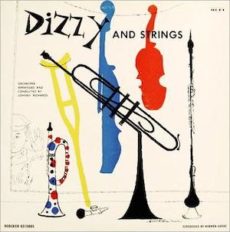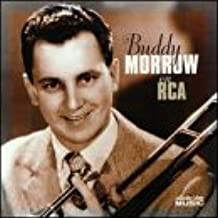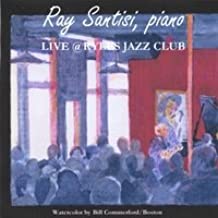
Daily Dose Of Jazz…
Lavere “Buster” Harding was born on March 19, 1917 to Benjamin and Ada Harding in North Buxton, Ontario, Canada. Raised in Cleveland, Ohio as a teenager he started on his own band.
In 1939 Buster went to work for the Teddy Wilson big band, and then in the early 1940s joined the Coleman Hawkins band. This was followed by his playing with Cab Calloway. He became a freelance arranger and worked with Benny Goodman, Artie Shaw, Roy Eldridge, Dizzy Gillespie, and Count Basie, among others.
In 1949 he became the musical director for Billie Holiday recording sessions. In the early 1960s Harding played with Jonah Jones, though he was known primarily as an arranger and composer.
Pianist, composer and arranger Buster Harding, who never recorded as a leader, passed away on November 14, 1965, in New York City.
More Posts: arranger,composer,history,instrumental,jazz,music,piano

Daily Dose Of Jazz…
Robert Deane Kincaide was born on March 18, 1911 in Houston, Texas but raised in Decatur, Illinois. He began playing professionally and working as an arranger in the early 1930s, working with Wingy Manone in 1932, then took a job with Ben Pollack from 1933 to 1935.
He arranged for Benny Goodman on the side before joining Bob Crosby’s group in 1935. Deane went on to work with Woody Herman and Manone again and by the end of the decade he worked briefly with Tommy Dorsey. In the first half of the 1940s he worked with Joe Marsala, Glenn Miller, Ray Noble, and Muggsy Spanier.
Serving in the United States Navy during World War II, he played in a ship’s band on the USS Franklin. He joined Ray McKinley’s band in 1946, working with him until 1950. From the 1950s until the early 1980s Kincaide worked primarily as an arranger for television. Arranger and saxophonist Deane Kincaide passed away at the age of 91 in St. Cloud, Florida on August 14, 1992.
Share a dose of a Houston arranger to inspire inquisitive minds to learn about musicians whose legacy lends their genius to the jazz catalog…
More Posts: arranger,bandleader,history,instrumental,jazz,music,saxophone

Conversations About Jazz & Other Distractions
Conversations About Jazz Presents
Rubin & Dameron: A Perfect Match on February 25
On Thursday, February 25 at 7:30 pm (EST) Hammonds House Digital invites you to join us for Conversations About Jazz & Other Distractions with host Carl Anthony. Carl’s special guest will be jazz vocalist Vanessa Rubin and they will discuss her career, sample some of her favorite songs, and delve into her latest CD, This Dream is You: Vanessa Rubin Sings Tadd Dameron. This free virtual program will stream on Hammonds House Museum’s Facebook and YouTube channels. For more information about this and upcoming virtual events visit hammondshouse.org.
Revered as both a torchbearer and a storyteller, jazz vocalist Vanessa Rubin possesses a voice hailed for crystalline clarity, warmth, and playful sass. The Cleveland native brings a wealth of diverse influences to her vocal performance from both the Trinidadian/Caribbean roots of her mother and traditional jazz by way of her Louisiana-born father. Additional influences include the melodic bell tone clarity of a young Nancy Wilson, the fire of Lambert, Hendricks & Ross, the sweet sounds of trumpeter Blue Mitchell, and her love of the Motown Sound…especially girl groups like the Supremes.
Rubin’s passion for rich musical stories is evident throughout her eight albums. Highlights include the evocative “Voyager II” from the pen of Teri Thornton, “Inside a Silent Tear” written by Blossom Dearie, a waltz version of John Coltrane’s “Giant Steps” lyricized by New York Voices, and an arrangement of “Superwoman” by Stevie Wonder, inspired by the Ahmad Jamal recording of “Poinciana.” Her current endeavors include highlighting and interpreting well known, obscure and new lyrical works of composer/arranger/pianist Tadd Dameron. “I hope to do for Tadd’s music what Carmen McRae did for Monk’s music,” Rubin explained. For more information visit: vanessarubin.com.
Tadd Dameron (1917-1965) was American jazz pianist, arranger, composer, and bandleader. The most influential arranger of the bebop era, he also wrote charts for swing and hard bop players. The bands he arranged for included those of Count Basie, Artie Shaw, Jimmie Lunceford, Dizzy Gillespie, Billy Eckstine, and Sarah Vaughan. In 1940-41 he was the piano player and arranger for the Kansas City band Harlan Leonard and his Rockets. He and lyricist Carl Sigman wrote “If You Could See Me Now” in 1946 for Sarah Vaughan and it became one of her first signature songs. Dameron wrote many arrangements for Gillespie’s big band, who gave the première of his large-scale orchestral piece Soulphony in Three Hearts at Carnegie Hall in 1948. Later in 1948, Dameron led his own group in New York, which included Fats Navarro. The following year Dameron performed at the Paris Jazz Festival with Miles Davis.
Hammonds House Museum is generously supported by the Fulton County Board of Commissioners, Fulton County Arts and Culture, the City of Atlanta Mayor’s Office of Cultural Affairs, The Community Foundation for Greater Atlanta, The National Performance Network, AT&T and WarnerMedia.
Hammonds House Museum’s mission is to celebrate and share the cultural diversity and important legacy of artists of African descent. The museum is the former residence of the late Dr. Otis Thrash Hammonds, a prominent Atlanta physician and a passionate arts patron. A 501(c)3 organization which opened in 1988, Hammonds House Museum boasts a permanent collection of more than 450 works including art by Romare Bearden, Robert S. Duncanson, Benny Andrews, Elizabeth Catlett, Jacob Lawrence, Hale Woodruff, Amalia Amaki, Radcliffe Bailey and Kojo Griffin. In addition to featuring art from their collection, the museum offers new exhibitions, artist talks, workshops, concerts, poetry readings, arts education programs, and other cultural events throughout the year.
Located in a beautiful Victorian home in Atlanta’s historic West End, Hammonds House Museum is a cultural treasure and a unique venue. During the COVID-19 pandemic, they continue to observe CDC guidelines, but look forward to welcoming in-person visitors soon! For more information about upcoming virtual events, and to see how you can support their mission and programming, visit their website: hammondshouse.org.
More Posts: arranger,composer,conversations,history,instrumental,jazz,musicians,piano,vocal

Daily Dose Of Jazz…
Buddy Morrow was born Muni Zudekoff on February 8, 1919 in New Haven, Connecticut. Receiving a scholarship at age 16, he studied trombone with Ernest Horatio Clarke at Juilliard from October to December 1936. During the next year he began playing trombone with Sharkey Bonano’s Sharks of Rhythm, an Eddie Condon group. He then worked with Eddy Duchin, Vincent Lopez, and Artie Shaw.
In 1938 Muni became known as Buddy Morrow when he joined the Tommy Dorsey band. The following year he performed with Paul Whiteman’s Concert Orchestra for their recording of Gershwin’s Concerto in F. In 1940, Morrow joined the Tony Pastor band, but this was only a short detour on his way to replacing Ray Conniff in the Bob Crosby band. Shortly after, he joined the U.S. Navy, during which he recorded with Billy Butterfield, leading a ten-piece band with three trombones, accompanying Red McKenzie singing four arrangements, including Sweet Lorraine and It’s the Talk of the Town.
After demobilization, Morrow joined Jimmy Dorsey’s band, then went into radio freelancing as a studio musician. He began conducting sessions, which introduced him to bandleading. RCA Victor sponsored him as director of his band in 1951. The band’s first hit, Night Train by Jimmy Forrest, was a hit in rhythm and blues.
Morrow was a member of The Tonight Show Band. His early 1950s records such as Rose, Rose, I Love You and Night Train appeared on the Billboard magazine charts. Night Train reached No. 12 in the U.K. Singles Chart in 1953. In 1959 and 1960 Morrow’s Orchestra released two albums of American television theme songs: Impact and Double Impact respectively.
In 2009 he received a Lifetime Achievement Award from the International Trombone Association. He led the Tommy Dorsey Orchestra from 1977 through 2010, when he appeared with the band for the final time. Over the course of his career he recorded 18 albums as a leader and 30 as a sideman. Trombonist, arranger, composer and bandleader Buddy Moorow, who was also known as Moe Zudekoff, passed away on September 27, 2010 in Maitland, Florida.
More Posts: arranger,bandleader,composer,history,instrumental,jazz,music,trombone

Daily Dose Of Jazz…
Ray Santisi was born on February 1, 1933 in Boston, Massachusetts and grew up in Jamaica Plain. He won an honors scholarship to attend Schillinger House and by the time he graduated it had been renamed Berklee School of Music, and later became Berklee College of Music..
He played as featured soloist with Charlie Parker, Stan Getz, Dexter Gordon, Mel Torme, Irene Kral, Herb Pomeroy and Natalie Cole to name a few. He performed with Buddy DeFranco, Joe Williams, Gabor Szabo, Milt Jackson, Zoot Sims & Al Cohn, Carole Sloane, Clark Terry and Bob Brookmeyer. As a leader he performed with his own ensemble, The Real Thing and in the 1960s performed with the Benny Golson Quartet.
As an educator, in 1957 Ray became a professor of piano and harmony at Berklee College of Music. His students include many notable jazz musicians, including Diana Krall, Makoto Ozone, Joe Zawinul, Keith Jarrett, Jane Ira Bloom, Jan Hammer, Alan Broadbent, Arif Mardin, Gary Burton, John Hicks, Danilo Perez and Hiromi. Fourteen of his students received Grammy awards.
He was awarded grants from the National Endowment for the Arts in composition and performance. He taught at Stan Kenton’s summer jazz clinics throughout the United States, performed in Europe, Scandinavia, and Asia. He performed at the first Jazz Workshop, and in 2008 was nominated to IAJE Jazz Education Hall of Fame.
He authored two books, Berklee Jazz Piano, and his instructional book, Jazz Originals for Piano. His trio played the first Sunday of each month for eleven years at Ryles Jazz Club until the month of his death. Pianist, composer, arranger, and educator Ray Santisi passed away on October 28, 2014 in his hometown.
More Posts: arranger,bandeader,composer,educator,history,instrumental,jazz,music,piano



